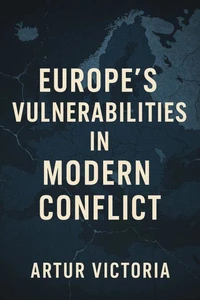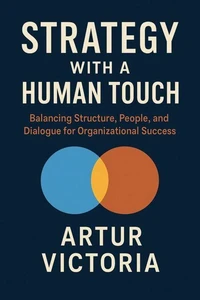Nouveauté
Virtual Contact Effect. Ethics and Policies, #3
Par :Formats :
Disponible dans votre compte client Decitre ou Furet du Nord dès validation de votre commande. Le format ePub protégé est :
- Compatible avec une lecture sur My Vivlio (smartphone, tablette, ordinateur)
- Compatible avec une lecture sur liseuses Vivlio
- Pour les liseuses autres que Vivlio, vous devez utiliser le logiciel Adobe Digital Edition. Non compatible avec la lecture sur les liseuses Kindle, Remarkable et Sony
- Non compatible avec un achat hors France métropolitaine
 , qui est-ce ?
, qui est-ce ?Notre partenaire de plateforme de lecture numérique où vous retrouverez l'ensemble de vos ebooks gratuitement
Pour en savoir plus sur nos ebooks, consultez notre aide en ligne ici
- FormatePub
- ISBN8232231286
- EAN9798232231286
- Date de parution27/10/2025
- Protection num.Adobe DRM
- Infos supplémentairesepub
- ÉditeurHamza elmir
Résumé
The twenty-first century began with a promise: that connection would bring us closer. Technology would dissolve distances, unify voices, democratize knowledge, and multiply empathy. For a brief moment, humanity believed that communication alone could heal its fractures. Then came silence. - In the early months of 2020, the world stopped. Streets emptied, schools closed, and faces disappeared behind masks and screens.
The great promise of connectivity met its test - and its limit. The same tools that once symbolized liberation became our only lifeline. For the first time in history, civilization survived through the mediation of glass. This was not only a public health crisis; it was a moral and anthropological event. The Virtual Contact Effect refers to the psychological, social, and moral reshaping produced by prolonged virtual interaction.
It is not only about technology but about the reconfiguration of the human gaze, the erosion of presence, and the reconstruction of empathy. Virtual contact has redefined social norms - how we look at one another, listen, and take turns in conversation. It has lowered social anxiety for some, yet increased it for others, offering safety from judgment but also deepening the fear of authenticity. It has created a new emotional condition - disembodiment - in which we are both everywhere and nowhere, visible but untouchable, expressive but ungrounded.
And it has cultivated a preference for asynchronous communication, where conversation no longer flows but flickers - delayed, fragmented, and multitasked. Young people, especially, have learned to socialize in parallel: one eye on a message, another on a screen, and another on themselves reflected within both. This effect is not purely negative. It has opened new spaces for creativity, learning, and inclusion.
But it has also produced a silent crisis: the corrosion of depth. The cost of infinite connection has been the loss of presence.
The great promise of connectivity met its test - and its limit. The same tools that once symbolized liberation became our only lifeline. For the first time in history, civilization survived through the mediation of glass. This was not only a public health crisis; it was a moral and anthropological event. The Virtual Contact Effect refers to the psychological, social, and moral reshaping produced by prolonged virtual interaction.
It is not only about technology but about the reconfiguration of the human gaze, the erosion of presence, and the reconstruction of empathy. Virtual contact has redefined social norms - how we look at one another, listen, and take turns in conversation. It has lowered social anxiety for some, yet increased it for others, offering safety from judgment but also deepening the fear of authenticity. It has created a new emotional condition - disembodiment - in which we are both everywhere and nowhere, visible but untouchable, expressive but ungrounded.
And it has cultivated a preference for asynchronous communication, where conversation no longer flows but flickers - delayed, fragmented, and multitasked. Young people, especially, have learned to socialize in parallel: one eye on a message, another on a screen, and another on themselves reflected within both. This effect is not purely negative. It has opened new spaces for creativity, learning, and inclusion.
But it has also produced a silent crisis: the corrosion of depth. The cost of infinite connection has been the loss of presence.
The twenty-first century began with a promise: that connection would bring us closer. Technology would dissolve distances, unify voices, democratize knowledge, and multiply empathy. For a brief moment, humanity believed that communication alone could heal its fractures. Then came silence. - In the early months of 2020, the world stopped. Streets emptied, schools closed, and faces disappeared behind masks and screens.
The great promise of connectivity met its test - and its limit. The same tools that once symbolized liberation became our only lifeline. For the first time in history, civilization survived through the mediation of glass. This was not only a public health crisis; it was a moral and anthropological event. The Virtual Contact Effect refers to the psychological, social, and moral reshaping produced by prolonged virtual interaction.
It is not only about technology but about the reconfiguration of the human gaze, the erosion of presence, and the reconstruction of empathy. Virtual contact has redefined social norms - how we look at one another, listen, and take turns in conversation. It has lowered social anxiety for some, yet increased it for others, offering safety from judgment but also deepening the fear of authenticity. It has created a new emotional condition - disembodiment - in which we are both everywhere and nowhere, visible but untouchable, expressive but ungrounded.
And it has cultivated a preference for asynchronous communication, where conversation no longer flows but flickers - delayed, fragmented, and multitasked. Young people, especially, have learned to socialize in parallel: one eye on a message, another on a screen, and another on themselves reflected within both. This effect is not purely negative. It has opened new spaces for creativity, learning, and inclusion.
But it has also produced a silent crisis: the corrosion of depth. The cost of infinite connection has been the loss of presence.
The great promise of connectivity met its test - and its limit. The same tools that once symbolized liberation became our only lifeline. For the first time in history, civilization survived through the mediation of glass. This was not only a public health crisis; it was a moral and anthropological event. The Virtual Contact Effect refers to the psychological, social, and moral reshaping produced by prolonged virtual interaction.
It is not only about technology but about the reconfiguration of the human gaze, the erosion of presence, and the reconstruction of empathy. Virtual contact has redefined social norms - how we look at one another, listen, and take turns in conversation. It has lowered social anxiety for some, yet increased it for others, offering safety from judgment but also deepening the fear of authenticity. It has created a new emotional condition - disembodiment - in which we are both everywhere and nowhere, visible but untouchable, expressive but ungrounded.
And it has cultivated a preference for asynchronous communication, where conversation no longer flows but flickers - delayed, fragmented, and multitasked. Young people, especially, have learned to socialize in parallel: one eye on a message, another on a screen, and another on themselves reflected within both. This effect is not purely negative. It has opened new spaces for creativity, learning, and inclusion.
But it has also produced a silent crisis: the corrosion of depth. The cost of infinite connection has been the loss of presence.






















